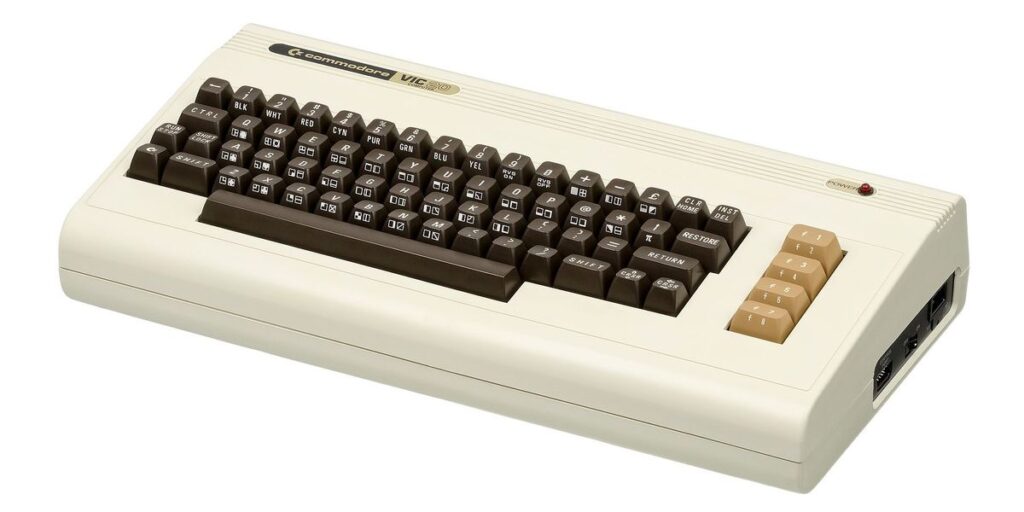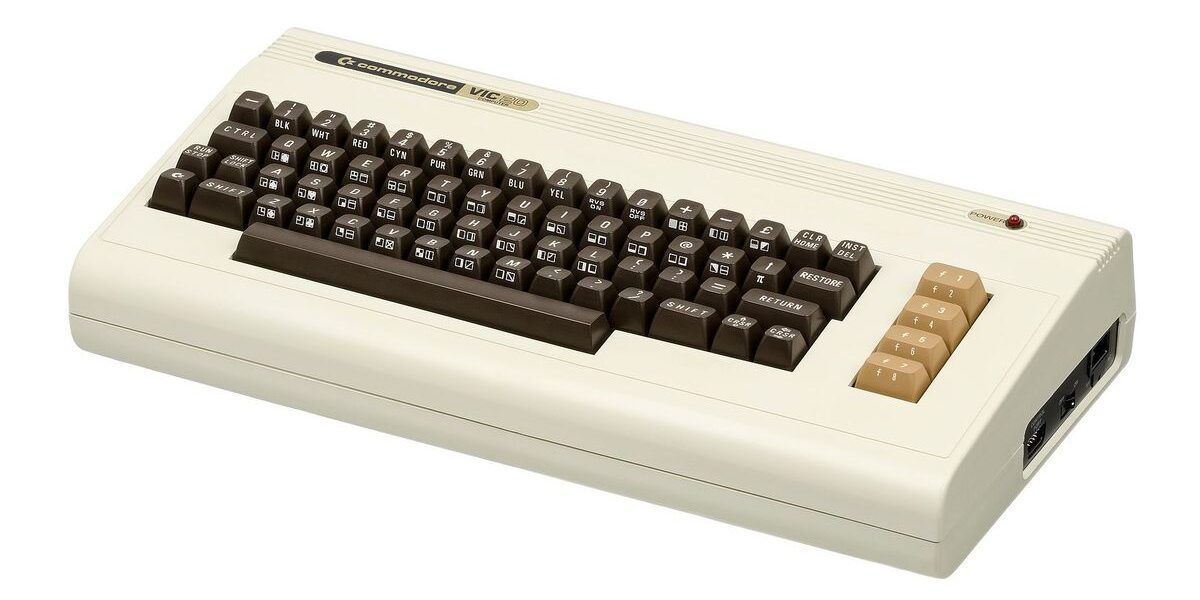
The year was the early 1980s, and home computers were starting to become a thing. So, my dad got this brilliant idea—how about we get a computer instead of a video game system? His logic was solid: a computer could do much more, not just play games but also help us learn and create.
Enter the Commodore VIC-20, our very first computer. It was an exciting time. Compared to the clunky and limited video game consoles, the VIC-20 felt like a futuristic piece of tech. One of its selling points, especially to my dad, was the keyboard. Unlike those mushy, membrane keyboards found on some other brands, the VIC-20 had a proper keyboard that actually felt good to type on.
Here’s where things got really interesting. Setting up the VIC-20 became a family project. We didn’t just buy the computer; we got RAM expansions and game cartridges too. The more accessories we added, the deeper we ventured into this new world of home computing.
My dad’s decision was not just about having the latest gadget. It was about the potential. The VIC-20 could play games, sure, but it was also a learning tool. It opened the door to things like programming and even digital creativity. Looking back, it was a genius move.
Learning and Growing with the VIC-20
Setting up the VIC-20 was like assembling pieces of a puzzle, getting all the bits and bobs working together. We kicked things off with a RAM expansion, which felt like giving the computer a shot of steroids. This bumped its memory from a meagre 5 KB to something a bit more robust. I think we had a 32K RAM expansion cartridge. Suddenly, the VIC-20 could do a lot more, and the games we loaded up ran smoother too.
Speaking of games, we got ourselves a nice collection of game cartridges. These were easy to pop in and out, no endless loading screens here! But the fun didn’t stop there. We also scored a Commodore 1530 Datasette, a tape drive that let us save and load programs directly from cassette tapes. Hearing that familiar whirring sound as it loaded was a thrill all its own.
Later on, we upgraded to a disk drive. Man, that was a game-changer. With the disk drive, loading and saving got faster and more reliable. At this point, our humble VIC-20 setup was starting to look pretty sophisticated for an early ’80s household.
But it wasn’t just about adding gadgets. It was about figuring out how everything worked together. The keyboard, with its satisfying click-clack, was our main interface, and we spent countless hours typing away. My almost teenage fingers slowly tapped those keys as I navigated through BASIC programs and loaded up new games.
Looking back, the setup phase taught us a lot more than just technical skills. It was about problem-solving, patience, and the excitement of making something work. Every little success, like getting a game to load or saving the first program, was a small victory that made us proud.
The VIC-20 in Context: A Groundbreaking Machine
When the VIC-20 hit the market, it was uniquely positioned as one of the first affordable home computers. At a time when most computers were either too expensive or too complicated for the average person, the VIC-20 broke those barriers. It opened the doors to home computing for regular families like mine.
Compared to others in its era, it was a beast. It may seem modest today with its built-in keyboard and 5 KB of RAM, but back then, it was a powerhouse. This little machine could run programs, play games, and even let you learn programming. Talk about versatility!
Looking back, having the VIC-20 when most of my friends and classmates didn’t have a computer made for some interesting experiences. It wasn’t just a toy; it was a source of endless curiosity and learning. While others were busy with their video game systems, I was diving into BASIC programming, typing in code from magazines and seeing the results on our small colour TV.
The VIC-20 was more than just a stepping stone. It was a trailblazer in the personal computing revolution. Despite its specs that might make you chuckle today, it represented a shift. Computing was no longer confined to the domain of scientists and big corporations. It was coming home, becoming personal, and changing how families interacted with technology.
This little machine holds a permanent place in the history of computing. For me personally, it wasn’t just the hardware or the games. It was the first taste of what technology could do. From solving problems to creating something from scratch, the VIC-20 was where it all began for my love of tech and programming.
From VIC-20 to Commodore 64: Evolution of Home Computing
Transitioning from the VIC-20 to the Commodore 64 felt like moving from a small town to a bustling city. The VIC-20 had served its purpose, but the Commodore 64 took things to a whole new level. Suddenly, we were talking about 64 KB of RAM and unprecedented graphical capabilities.
The jump to the Commodore 64 wasn’t just a hardware upgrade; it was a leap in what was possible. More sophisticated games, better sound, more complex programs—this was a machine ahead of its time. The larger memory meant we could do more, and do it faster. Going from the VIC-20’s charming simplicity to the Commodore 64’s capabilities was exhilarating.
But that doesn’t mean the VIC-20 lost its value. It remained a nostalgic piece of our computing journey, the first steps we took into the world of technology. Even as we marvelled at the Commodore 64, the lessons learned from the VIC-20 carried over. Problem-solving, programming, and a love for tech didn’t start with the new machine; they grew out of our experiences with the VIC-20.
Reflecting on the move from the VIC-20 to the Commodore 64, it’s clear how far home computing had come in just a few years. The evolution wasn’t just about more memory or better graphics; it was about giving people the tools to create, learn, and innovate even more.
For me, these early experiences with both computers laid the groundwork for a lifetime of tech enthusiasm. The VIC-20 was the spark, igniting an interest that the Commodore 64 fanned into a flame. Looking back, it’s incredible to see how those first tentative steps led to a journey into the vast world of technology.
The Commodore VIC-20 Specifications
- Specification Details
- Processor MOS Technology 6502, 1.1 MHz
- Memory (RAM) 5 KB (expandable with memory cartridges)
- Graphics 176 x 184 resolution, 16 colors
- Sound 3-voice sound generator with noise
- Video Output Composite video output (connect to TV)
- Storage Cassette tape drive (Datasette) or optional external disk drive (Commodore 1540)
- Keyboard Full-size 66-key keyboard
- Input/Output Ports Cartridge slot, user port, joystick port, serial port, composite video port
- Operating System Commodore BASIC V2
- Price $299.95 US (at launch)
- Release Date 1980
A Commodore VIC-20 History Video
A video from one of my Favourite Youtubers “The 8-Bit Guy”


